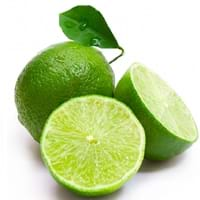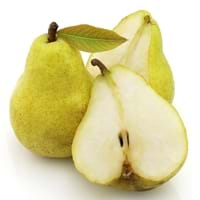Health Benefits
Arthritis treatment, Cholera treatment, Gout treatment, Heart care, Piles treatment, Scurvy treatment
Arthritis prevention, Cancer prevention, Gout treatment, Heart care
General Benefits
Cures fever, Digestive aid, Eye care, Maintains healthy cholesterol level, Treatment of common cold
Anti-inflammatory properties, Boosts immune system, Controls blood pressure, Controls blood sugar levels, Cures fever, Digestive aid, Sore throat treatment
Skin Benefits
Anti-aging benefits, Skin rejuvenation, Treatment of acne, Treatment of dark spots
Reduces wrinkles, Treatment of acne
Hair Benefits
Promotes longer and healthier hair, Treatment of dandruff
Promotes longer and healthier hair, Shiny hair
Allergy Symptoms
Breathing difficulty, Coughing, Eye irritation, Hives, Inflammation, Nasal congestion, Runny nose, Skin rash, Wheezing
Anaphylaxis, Digestive Problems, Itching, Skin Rashes, Swelling
Side Effects
Chances of sunburn
Allergic reaction
Best Time to Eat
Along with meal, Best to drink warm water with lime on an empty stomach, Don't consume at night and before bed
As a snack in the late afternoon, Don't consume at night and before bed, Eat the fresh ones, avoid mixing with any other foods, don't eat after meal., Morning time (before lunch)
Vitamin B5 (Pantothenic Acid)
Vitamin C (Ascorbic Acid)
Vitamin K (Phyllochinone)
Phytosterol
Not Available
Calories in Fresh Fruit with Peel
Not Available
Calories in Fresh Fruit without Peel
Not Available
Calories in Frozen Form
Not Available
Not Available
Calories in Dried Form
Not Available
Not Available
Calories in Canned Form
Not Available
Type
Citrus, Tree fruit
Tree fruit
Season
All seasons
Autumn, Summer, Winter
Varieties
Key lime, Persian lime, Kaffir lime, Desert lime, Palestine Sweet Lime, Mexican Sweet Lime, Mary Ellen Sweet Lime
Green Anjou, Red Anjou, Bartlett, Red Bartlett, Bosc, Comice, Concorde, Forelle, Seckel and Starkrimson
Inside Color
Light Green
White
Taste
Acidic, Sour
Crunchy, Sweet
Origin
India
China, Japan
Soil Type
Clay loam, Sandy loam
Clayey, Loamy, Sandy
Climatic Conditions
Sunny, Warm to hot climate
Cold, Hot, Without frosts
Facts about
- Lime is the called as the powerhouse of flavors.
- Fresh lime juice is so acidic that it can dissolve concrete.
- Limes are more fragrant and acidic than lemons.
- Persian limes are almost seedless and thorn less.
- The first pear tree was planted in North America in 1620.
- The Chinese considered the pear fruit to be a symbol of immortality.
- This fruit was used as a natural remedy against nausea in ancient Greece.
Other Countries
Argentina, Brazil, India, Mexico
Argentina, Belgium, India, Italy, Japan, South Africa, Spain, Turkey, United States of America
Top Importer
United States of America
Europe
Top Exporter
Mexico
China
Botanical Name
Citrus aurantifolia
Pyrus communis
Synonym
not available
Not Available
Subkingdom
Tracheobionta
Tracheobionta
Division
Magnoliophyta
Magnoliophyta
Class
Magnoliopsida
Magnoliopsida
Species
C. aurantifolia
P. communis
Generic Group
Citrus fruit
Rose
Difference Between Lime and Pear
We might think that Lime and Pear are similar with respect to nutritional value and health benefits. But the nutrient content of both fruits is different. Lime and Pear Facts such as their taste, shape, color, and size are also distinct. The difference between Lime and Pear is explained here.
The amount of calories in 100 gm of fresh Lime and Pear with peel is Not Available and 57.00 kcal and the amount of calories without peel is 30.00 kcal and Not Available respectively. Thus, Lime and Pear belong to Low Calorie Fruits and Low Calorie Fruits category.These fruits might or might not differ with respect to their scientific classification. The order of Lime and Pear is Sapindales and Rosales respectively. Lime belongs to Rutaceae family and Pear belongs to Rosaceae family. Lime belongs to Citrus genus of C. aurantifolia species and Pear belongs to Pyrus genus of P. communis species. Beings plants, both fruits belong to Plantae Kingdom.









